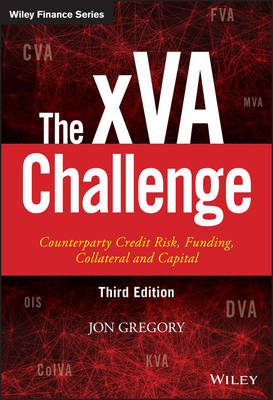The Wiley Finance
1 primary work • 4 total works
Book 606
Hedging aspects, together with the associated instruments such as credit defaults swaps (CDSs) and contingent CDS (CCDS) are described in full. A key feature of the credit crisis has been the realisation of wrong-way risks illustrated by the failure of monoline insurance companies. Wrong-way counterparty risks are addressed in detail in relation to interest rate, foreign exchange, commodity and, in particular, credit derivative products. Portfolio counterparty risk is covered, together with the regulatory aspects as defined by the Basel II capital requirements. The management of counterparty risk within an institution is also discussed in detail. Finally, the design and benefits of central clearing, a recent development to attempt to control the rapid growth of counterparty risk, is considered. This book is unique in being practically focused but also covering the more technical aspects. It is an invaluable complete reference guide for any market practitioner with any responsibility or interest within the area of counterparty credit risk.
The xVA Challenge: Counterparty Credit Risk, Funding, Collateral, and Capital is a practical guide from one of the leading and most influential credit practitioners, Jon Gregory. Focusing on practical methods, this informative guide includes discussion around the latest regulatory requirements, market practice, and academic thinking. Beginning with a look at the emergence of counterparty risk during the recent global financial crisis, the discussion delves into the quantification of firm-wide credit exposure and risk mitigation methods, such as netting and collateral. It also discusses thoroughly the xVA terms, notably CVA, DVA, FVA, ColVA, and KVA and their interactions and overlaps. The discussion of other aspects such as wrong-way risks, hedging, stress testing, and xVA management within a financial institution are covered. The extensive coverage and detailed treatment of what has become an urgent topic makes this book an invaluable reference for any practitioner, policy maker, or student.
Counterparty credit risk and related aspects such as funding, collateral, and capital have become key issues in recent years, now generally characterized by the term 'xVA'. This book provides practical, in-depth guidance toward all aspects of xVA management.
- Market practice around counterparty credit risk and credit and debit value adjustment (CVA and DVA)
- The latest regulatory developments including Basel III capital requirements, central clearing, and mandatory collateral requirements
- The impact of accounting requirements such as IFRS 13
- Recent thinking on the applications of funding, collateral, and capital adjustments (FVA, ColVA and KVA)
The sudden realization of extensive counterparty risks has severely compromised the health of global financial markets. It's now a major point of action for all financial institutions, which have realized the growing importance of consistent treatment of collateral, funding, and capital alongside counterparty risk. The xVA Challenge: Counterparty Credit Risk, Funding, Collateral, and Capital provides expert perspective and real-world guidance for today's institutions.
Central Counterparties – Mandatory Clearing and Bilateral Margin Requirements for OTC Derivatives
by Jon Gregory
Central Counterparties is a practical guide to central clearing and bilateral margin requirements, from one of the industry's most influential credit practitioners. With up-to-date information on the latest regulations imposed after the global financial crisis, this book covers the mechanics of the clearing process and analyses the resulting consequences. Detailed discussion explains the ways in which the very significant clearing and margining rules will affect the OTC derivatives market and the financial markets in general, with practical guidance toward implementation and how to handle the potential consequences.
Over-the-counter derivatives were blamed by many for playing a major role in the 2007 financial crisis, resulting in a significant attention and dramatic action by policymakers, politicians, and regulators to reduce counterparty credit risk which was seen as a major issue in the crisis. The two most important regulatory changes are the mandatory clearing of standardised OTC derivatives, and the requirements for bilateral margin posting in non-standard OTC contracts. Central Counterparties is a complete reference guide to navigating these changes, providing clarification and practical advice.
- Review the mitigation of counterparty credit risk with the historical development of central clearing
- Clarify the latest regulatory requirements imposed by Dodd-Frank, EMIR, Basel III and more
- Learn the mechanics of central clearing, with special attention to complex issues such as margin calculations, the loss waterfall, client clearing and regulatory capital rules
- Gain insight into the advantages and disadvantages of clearing and bilateral margin requirements, and the potential issues that arise
As the clearing and margining mandates are phased in, the associated costs will be severe enough to dramatically shift the topology of the financial markets and transform the nature of risk. Central Counterparties provides the information, clarification and expert insight market practitioners need to get up to speed quickly.


